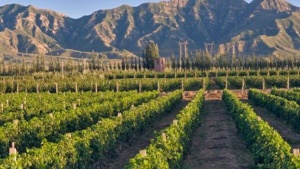China launches scheme to produce top wine on edge of Gobi Desert

China has unveiled a pilot scheme to produce premium wine in the eastern foothills of the Helan Mountain at the edge of the Gobi Desert, in an attempt to turn it into China’s Bordeaux.
The National Open Development Comprehensive Pilot Zone for Grape and Wine Industry kicked off earlier this month in Minning township, Northwest China’s Ningxia Huiregion, which is located between 37 degrees and 39 degrees north latitude — considered to be the sweet spot for growing wine grapes.
The zone — the first of its kind in China — has a planned area of over 500 square km, and it is predicted that it will result in 66,667 hectarees of vineyards within five years, with a value of 100bn yuna ($15.4bn).
“If this goal can be achieved, the pilot zone will become one of the largest quality wine producing areas in the world,” said Sui Pengfei, director general of the international cooperation department, Ministry of Agriculture and Rural Affairs, at the launch ceremony.
The establishment of the pilot zone woul encourage government departments and market entities to “boldly try” all measures and models that can help industrial development, added Sui.
Compared with major international wine producers, China’s modern wine industry started late, and the Helan Mountain wine area is even younger. The first bottle of wine was only produced in the desert region in 1984 and in just a few decades,the edge of the Gobi Desert has been transformed with extending vineyards irrigated by water from the Yellow River.
Vineyards in Ningxia currently account for a quarter of China’s total, yielding 36 high-quality grape varieties. There are 211 wine chateaux — completed or under construction — with an annual output of 130 million bottles of wine, making up 60% of China’s total production.
